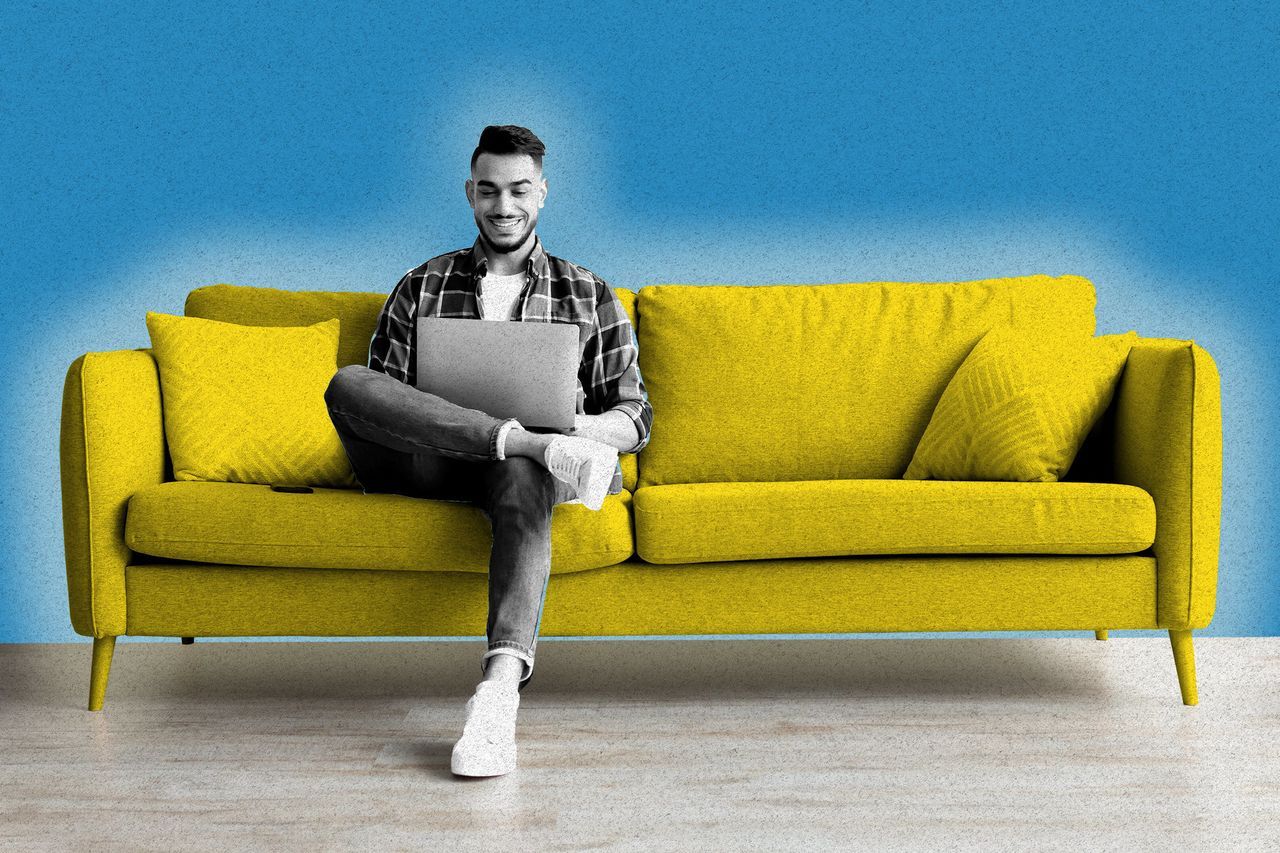Amie Miller has a go-to spot for conducting job interviews: a gray, L-shaped couch. The problem is it is everyone else’s favorite spot, too.
“We’ve reached peak couch,” says Miller, the chief talent officer at TBWA Worldwide.
The advertising agency now boasts 15 sofas in its Manhattan office space, up from five a year ago. The living-room-like accessories range from an armless sectional to a boxy, geometric “big-lounge” model.
Companies have long tried to make offices less stuffy by creating collaboration spaces , chef-driven restaurants, outdoor terraces and even signature scents . The thinking was that if the office were more enjoyable, workers would spend more time there.
Some of these initiatives have come and gone with the free laundry and dry cleaning . The couch, however, is finding long-term fans among executives and the rank-and-file. As fewer workers swipe in, there is more square footage and couches are showing up in individual offices, common spaces and even hallways.
Workers say they feel more comfortable. Managers say it helps them dream up big ideas.
“It cuts the nerves,” says Jonathan Hastings , senior director of business development at Sensis, an advertising agency in Glendale, Calif.
Global architecture and design firm Gensler estimates that demand for couch installations in redesigned office spaces rose 25% in the past year. Retailer Room & Board says sofa sales for its business customers are also up 25%. One of its top sellers: The $2,499 André model, in ink blue, at 89 inches long.
Flophouse aesthetic
Carla Jaspers , a Duxbury, Mass., ergonomics consultant for individuals and employers, says she sees three or four clients a week who have back and neck issues that can stem from balancing a laptop while working from a couch.
Clients lie down. They put their feet up. They hunch forward to stare at a screen.
“We’ve devolved a little bit into a flophouse aesthetic,” says Jaspers.
Jaspers says that working on the couch can be OK in short bursts, but most adults need to be seated or standing with a computer on a desk or other flat surface most of the time.
“The alignment that I’m looking for in a client really goes out the window with a couch,” she says.
Upholstery cleaners have other concerns, noting that when iced-coffee season and office happy hours meet work-couch culture, the challenges can multiply.
“There’s no way I’m going to get red Gatorade off a white sofa, but we’re able to get most things,” says Jose Smith , owner of 1st Class Furniture and Carpet Care, which cleans offices in Orange County, Calif.
Smith says the real problem isn’t that people are behaving like they would at their house, it is that they are treating their companies’ furniture much worse than they would ever treat their own.
“There’s people eating on them,” he says, adding that in the past two years as more companies have bought more office couches, his business has increased 20%.
The new couch office
John McNeil , who runs a marketing agency in Berkeley, Calif., says couches have been critical to getting employees to show up in the office more. The firm added two in the past six months, bringing the total to six.
When he calls a meeting in his office, people first head for the couch, aiming for the ends. Nobody wants to sit in the middle.
“Creative people work better together, and working together better starts with a couch,” he says.
The ideal office couch height is 18.5 inches high, with a seat depth of 22 inches, and offering a “firm sit,” says Gensler’s design director Kelly Dubisar .
Those dimensions invoke an alert working conversation, she says: “It’s not really a place to lay down.”
Doug Heiferman has trained over 500 small-business owners in upholstery cleaning. These firms can make up to $350 an office visit, depending on the fabrics and furniture that need deep cleaning. The bill can run higher when offices have lifestyle spaces with fancy kitchens and lounges or entertainment areas.
His best advice to office couch buyers: Patterned upholstery hides stains while earth-tone fabric makes them show more. Whatever the color and texture, he says, fabric protector is always a good idea.
Wake-up calls
Executive offices and cubicles are being turned into lounges and huddle rooms, which accounted for 19.3% of office space in 2023, compared with 12% prepandemic, according to WeWork ’s Global Office Trends report.
Lauren Lapitan is WeWork’s community lead for three floors of a New York City building where more than 100 small businesses co-work. She acts as a liaison between those clients and the building’s maintenance staff, but spends an increasing chunk of her day policing the couches.
Lapitan says she frequently has to wake up people who snore because they are disrupting others’ Zoom calls.
“I’ve had to tap them. Sometimes it’s not enough and I have to shake them a bit, and they get cranky,” she says.
A poll of more than 700 U.S. workers found that employees are split on the rise of office couches. Only a third of respondents said they liked them. The rest said they were attractive but uncomfortable, comfortable but ugly or just not appealing on either level, according to CivicScience, a consumer-analytics firm that conducted the survey this past month.
John Dick , chief executive of the marketing and polling firm, likes to get comfy on his favorite blue couch at the office. He kicks off his shoes and works with his computer in his lap. He is careful only to do it when colleagues aren’t around, and says he listens for the ding of the elevator doors.
“I wouldn’t want my employees to come in with me looking like that,” he says.
Write to Anne Marie Chaker at Anne-Marie.Chaker@wsj.com



